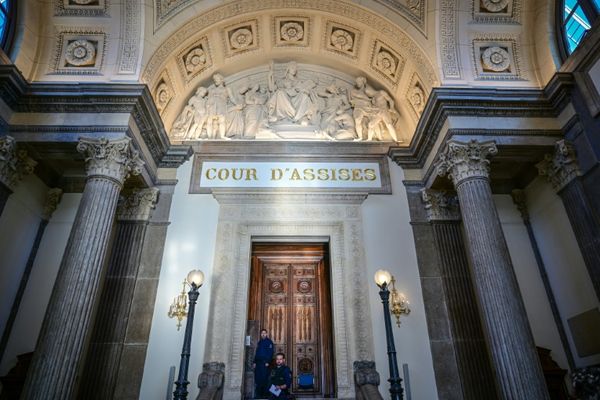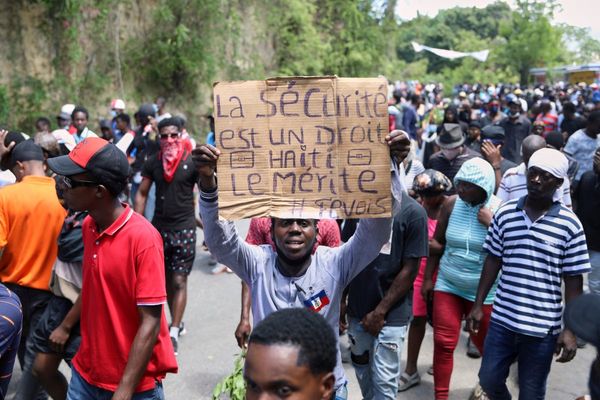
On the East Coast, people thrive on the idea that the only thing Southern California has to offer its residents is sunshine. L.A.: cultural wasteland with good weather. It’s old. However, reflecting that opinion, people here in L.A. tend to strut and brag about the weather, as if they believe weather is all that matters in a human life. Eventually that may be true. For the most vulnerable people in L.A. during this summer’s severe, unevenly felt heat wave, it already is.
Truly, when I first arrived in L.A. 20 years ago (I cringe when I mention that enormous number), I noticed that the one thing both long-term transplants and actual Californians would cite as a reason to live in L.A. really was the weather. Sometimes I moaned about how I missed New York and my friends and family “back East”—and also what was so great about palm trees, not to mention cacti and crummy chaparral, and did anyone like driving all the time? The Californians would fix me with a stare as if I were insane and ask me to check the weather in L.A. that day and compare it with New York’s. In New York, every time, there was sleet or an electrical storm, an Arctic squall or a hurricane. Here in L.A., it was, as ever, another sunny day.
That meteorological superiority was supposed to excuse all other deficiencies. But things have changed in California. First, we’re in the middle of the longest drought in recent memory. In L.A., rules about water usage are changing from month to month but always tightening. Second, and at the same time, the annual fire season is getting longer and longer, starting now in late spring and sometimes extending through November. And third, the temperature, which seems to be sinking in the winter, is rising in the summer. (Several days last winter, L.A. was colder than New York.)
[Caroline Mimbs Nyce: America is going to have a ‘Heat Belt’]
Our current heat wave began Wednesday. “Excessive Heat Warning,” read my weather app, day after day. The Los Angeles Times featured a big photo on the front page above the fold of an orange sky blasted by a ball of white light that was the sun. “UNDER A HEAT DOME” was the headline, in all caps, for the paper’s opening feature on the extraordinary temperatures. “California will broil this week in a ‘long-duration event,’” ran the subhead. One day last week, the temperature was 112 degrees—in Castaic, along the 5 freeway—“beneath a cloudless sky,” as the paper put it, so hot that several firefighters were pulled from the battle against the Route Fire because of heat-induced illness. Later in the week, temperatures reached 102 in Encino in the San Fernando Valley and were trending upward. At one point, a legendary but possibly not perfectly accurate thermometer in Death Valley showed a reading of 127, which would have made it the hottest place on Earth at that moment.
This heat wave is more dangerous than previous ones because night does not bring the expected “temperature recovery,” as weather experts call it, especially inland where wildfires tend to arise with greater frequency than right along the coast. In the thick of our hot, dry summer, The New York Times suddenly announced that because of climate change, disastrous and unprecedented rain and snowfall would surely cause a 1,000-year flood event in California. A month-long superstorm. Right now, it doesn’t seem imminent.
Throughout the world, meteorological events tend to highlight social inequalities. Here too. During the extended drought, for example, the residences of certain celebrities have exceeded municipal water allowances to a shocking degree. Among these, the former NBA shooting guard Dwyane Wade’s $18 million estate in the Hidden Hills neighborhood above Malibu recently went beyond the district’s monthly allotted water budget by more than 1,400 percent, or 90,000 gallons. Those of us without $18 million mansions are shutting off our sprinklers and leaving our gardens to wilt and die. Front lawns are turning brown from heat and drought. If you’re not rich enough to entirely rethink your landscaping and festoon it with decomposed granite and winding paths and cacti and succulents that require very little water, what you’re left with is a dirt garden with sticklike remnants of plants. Meanwhile, as the Los Angeles Times has also reported, the number of Californians who must deal with contaminated drinking water because of the drought has reached almost a million.
Heat isn’t felt equally, either. I write this with my fan blowing and my air-conditioning ready to blast. Most of the city’s residents are staying inside, too, unless life forces them out. In the homeless encampments around the city, and on Skid Row, though, everyone is outdoors in whatever shade they can find, because the tents are dangerously hot. I drove by an encampment under a freeway where I saw people sitting on the curb—as if the curb were a stoop or a front yard—or leaning against the walls that supported the overpass, chatting and fanning themselves.
[Read: Earth’s new gilded era]
Dog walking begins at 6 a.m., because at six it’s only 74 degrees. By midmorning it’s 90 degrees, and those unlucky enough to have to run an essential errand scurry down the hot sidewalks and jump back into their car. A few days ago, I decided to take a tour of town in the comfort of my air-conditioned car to see how people were coping. Mostly there were no people to see, coping or otherwise. Wilshire Boulevard was a glaring-white reflective canyon, even emptier of humanity than it normally is. In leafier neighborhoods, only the young and hardy, and one might say foolish, were out on the usual skateboards, bikes, and scooters. People rushed from one air-conditioned space to another, home to pharmacy, restaurant to office.
Men had cast off their shirts even on the fanciest streets in Beverly Hills. The parks, which teemed with people during the summer after pandemic restrictions abated, were deserted as the mercury rose uncomfortably close to 100, except for a few tourist groups gathered in the shade of the occasional tree, looking disconsolate and restless. Everyone was thinking about the beach, but really? Up and down the coast, several beaches, including Santa Monica’s, have been declared unsafe because of high bacterial levels.
At lunchtime, the pandemic eating areas were empty on the sunny side of streets and sparsely populated even across the way. All through Hollywood and Beverly Hills, fruit vendors on usually busy corners sat quietly behind their silver trolleys, under rainbow umbrellas, without customers. COVID-testing sites were unvisited, populated only by their bedraggled-looking technicians. Pedestrian traffic, always limited in Los Angeles, was almost nonexistent, down to a smattering of blond women in tennis skirts and tank tops, carrying open umbrellas as parasols, who popped in and out of coffee shops and clothing stores on Beverly Drive. Then late afternoon arrived, with its long shadows, and still no respite. No fronds fluttered. The air throughout the city, still in the 90s, was unusually still. Around 9 p.m., the temperature finally dipped back into the 80s and the evening dog walk began.
Plenty of people are still trying to live the old laid-back, upscale L.A. lifestyle. If you’re lucky, a small breeze starts up in late evening and you can sit down with a panting dog next to you and have cocktails around the pool or on a shaded lawn—as the drought and the heat waves chip away at the continued existence of these old signifiers. Already, 90 is the new 80. An image I can’t get out of my mind as typifying the whole rotten situation is that of a homeless man who was found one recent morning floating facedown, dead, in a swimming pool in a wealthy, garden-filled neighborhood.
Friday night, looking up from a dinner in Hollywood under an open roof sparkling with tiny lights against a dark-blue sky, my son said to me, “Even on the worst day of the year, Los Angeles is perfect.” He knows he’s overstating the case for effect, because he’s only just arrived back here after several years in New York. And he means for people like us, of course, people who don’t yet need to believe that weather is all that matters in a human life.







